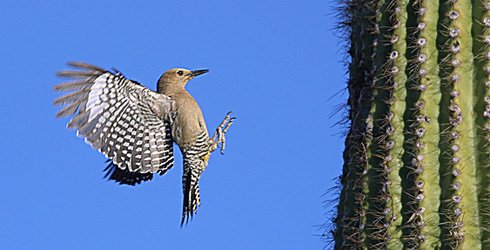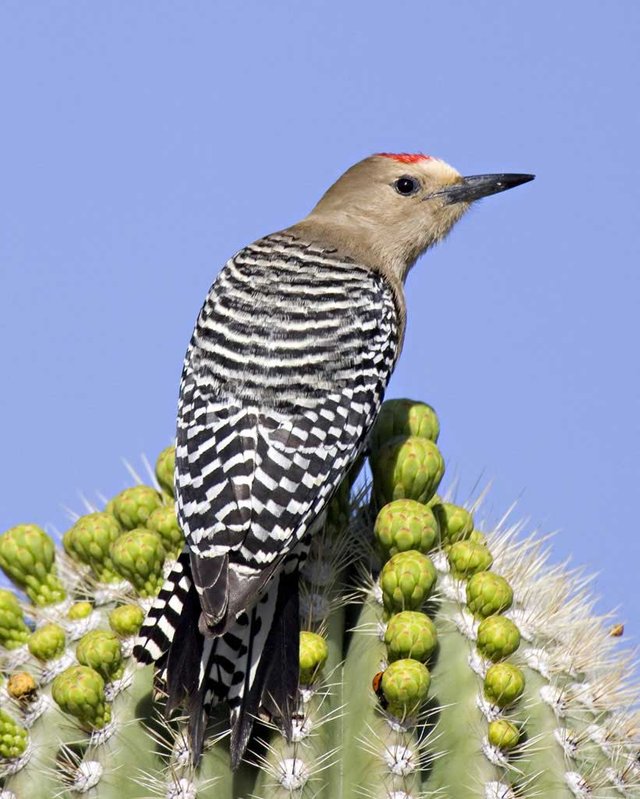Animal story #001 ::::GILA WOODPECKER::::
 GILA WOODPECKER
GILA WOODPECKER
Ranging in length from 8 to 10 inches and with an average wingspan of 16 inches, the Gila woodpecker can be found in deserts, brushy woodlands and urban parks from the American southwest to west-central Mexico. It feeds primarily on insects, cactus fruit and berries. Although they do not use them immediately, waiting first for the sap to harden, Gila woodpeckers excavate cavities in cacti and trees as nesting sites. Females typically lay two broods a year of 3 to 5 eggs, which incubate for 14 days. Once abandoned, the cavities are occupied by reptiles, rodents and small birds like kestrels, elf owls, flycatchers and wrens..jpg)
In the desert, the woodpeckers perform the important ecological function of removing unhealthy flesh from the saguaro cactus. Some insects on which it feeds carry diseases, harmless to the bird, which damage the cactus and leave discolorations. The marks signal “Here be larvae” to the bird, and as it excavates the insects, it also cuts away the diseased tissue. As the sap hardens, the cactus is healed, and the excavation becomes a convenient nesting site.
Populations may be in slight decline because of human development of the Sonoran Desert and competition for nest sites with European starlings. A decrease in the Gila woodpecker population would damage the entire ecosystem, since its nest sites are widely utilized by other species, and it may be an important pollinator of the saguaro cactus.